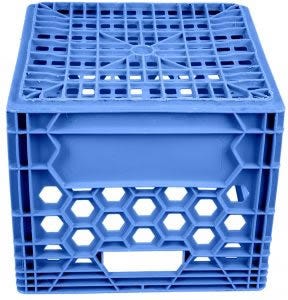
After weeks of carefully nurturing your young seedlings, you’re ready to make the next big step – moving them from their sheltered environment to your hydroponic garden. When is the right time? What should you protect them from? How much is too much? How little is too little? These are the questions every gardener asks, hydroponic or not, as they move their “babies” to their new home.
Delicate Seedlings
The standard process for hardening off seedlings – preparing them for new and ever-changing weather conditions -- varies by the plant species, but it’s generally the same. Here, for example, are the steps for hardening off tomato seedlings.
- STEP 1 – On Day 1, set the tomato seedlings outside in dappled shade. Leave them for an hour or two. Bring seedlings inside by sunset.
- STEP 2 – In the following days, gradually increase the time outside and also allow the tomato seedlings to be exposed to the sun for short periods.
- STEP 3 – During Step 2, monitor the tomato seedlings for signs of stress. Move to shade and shelter if needed. Pay close attention to moisture levels, since they may dry out quickly.
- STEP 4 – After seven days, tomato seedlings will be ready to stay outside overnight if temperatures remain above 50°F at night.
Outdoor Hydroponics

To move your seedlings from their initial grow pots to your outdoor hydroponic system, hardening should generally be complete. If you’re a little concerned about whether they will survive outdoors, there are a few additional steps you can take.
- Shore up the delicate stem a bit with your growing medium. You may also try staking the stems, if that’s possible. Since they’re small now, you can use super small stakes – even Popsicle sticks will work for a few weeks.
- Cover the plants with a milk crate. This will provide the plant with dappled sunlight to protect it from sun scald. The crate will also diffuse the wind, providing more protection.
- Add nutrients to accelerate the growth of your plant. These will strengthen your post-seedling plant inside and out, helping it survive long enough to transition to harvest.
Sun & Heat
Protecting still-delicate plants from sun and heat should be one of your top priorities. While most mature plants thrive in hot, sunny weather, most seedlings are meant to develop under the protection of the canopy of older plants. Only when they gather enough strength and nutrients do they launch past that protective cover to full sun and heat exposure.
If your hydroponics system is small, mounted on wheels or in a cart, temporarily move your system under tree cover in those early weeks or during hot spells. Once the plants are a bit stronger, they can be moved back to a full-sun location.
Wind & Rain
Hydroponic systems also need to take care that rain doesn’t dilute the nutrient mix. Take measurements after every storm and be prepared to compensate since young, post-seedling plants will be particularly susceptible to nutrient changes!
An intense storm can utterly destroy a crop in this stage. So can overwatering or persistent winds. If you know there’s a big storm brewing, take measures to protect your hydroponic set up. Even a carefully placed tarp or row cover can provide substantial protection for a hydro system that’s nursing young plants.
For wind, consider temporarily moving a system behind a building or hedgerow that screens the plants.
Pests & Disease
Inside or outdoors, your hydroponic garden is going to be the target of pests, fungus and disease, so always take measures to protect your seedlings and other young plants, all of which are particularly vulnerable. Check them daily for signs of pest-related stress by looking over their stems and both sides of their leaves. If you see signs of insects or illness, have an OMRI Listed® insect killer and fungicide available, such as Safer® Brand 3-in1 Garden Spray, to take control of the situation.
What’s good about a hydro system is that you have a lot of control. You can adjust the growing medium to limit the bugs hiding there. You can boost nutrients in the water solution, too, which allows you to react immediately to outside threats to your seedlings.

Now that you've brought your seedlings outside, there are some steps you can take to protect them further.
Seedlings to the Sun – What are your Experiences?
Are you ready to move your seedlings from their safe and cozy environment inside to an outside system? We want to hear about it! Tell us how it goes in the comments below or the next time you visit Safer® Brand on Facebook. You can also find more links to helpful products and articles by subscribing to the Safer® Brand E-Newsletter.



